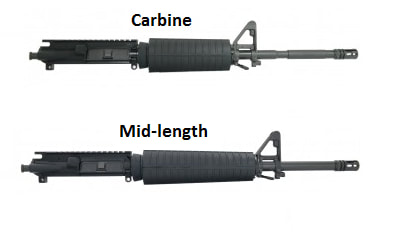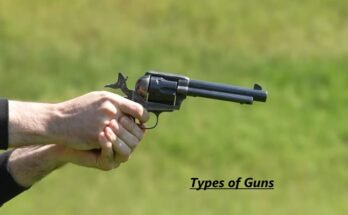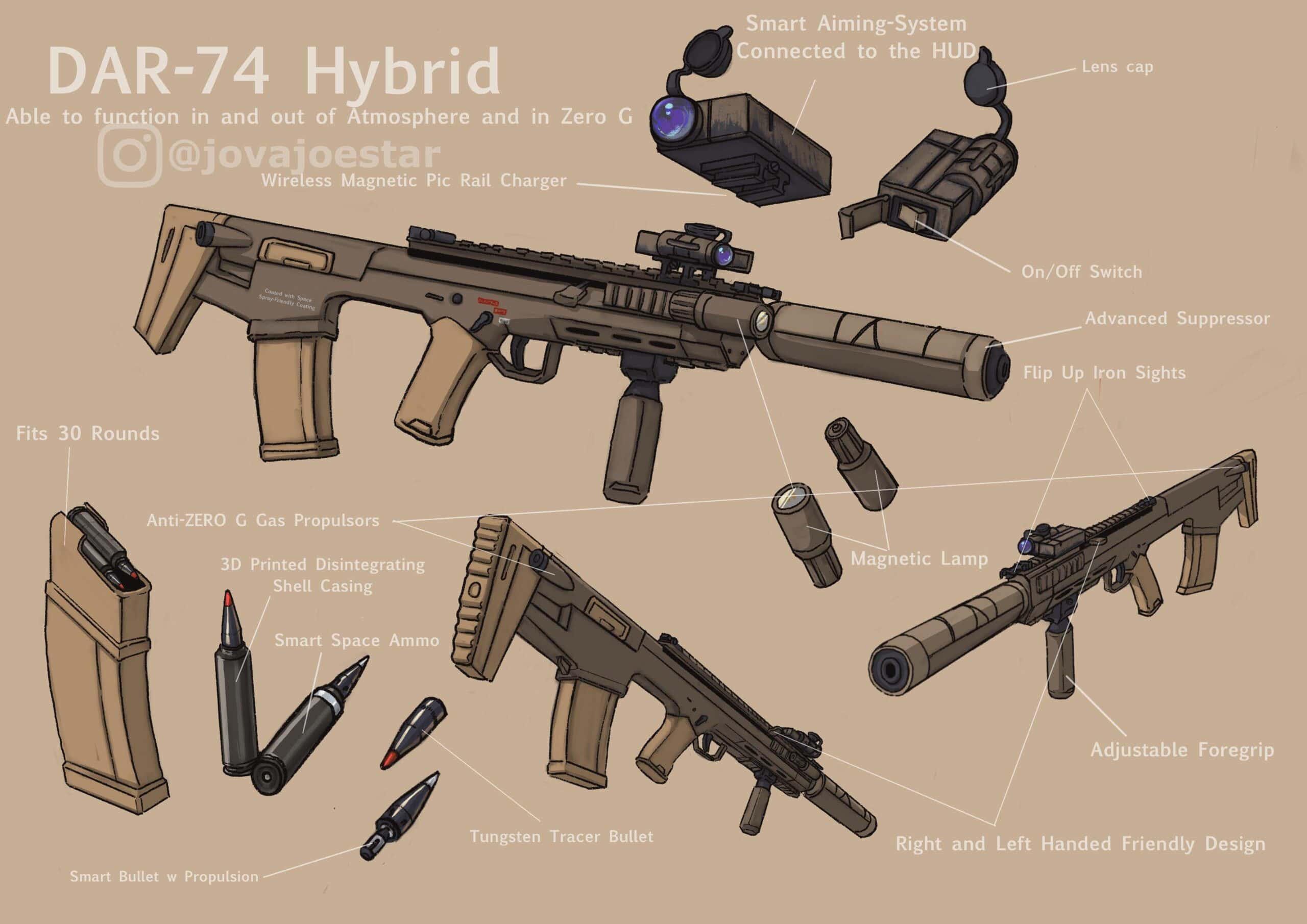A carbine AR-15 has a shorter barrel and gas system compared to a rifle-length AR-15. This difference affects handling and performance.
Understanding the differences between carbine and rifle-length AR-15s is crucial for firearm enthusiasts. Carbines typically have barrels 16 inches or shorter, making them more compact and easier to maneuver. Rifle-length AR-15s, with barrels longer than 16 inches, offer enhanced accuracy and velocity due to a longer sight radius and gas system.
These differences impact the firearm’s weight, balance, and suitability for various shooting activities. Choosing between them depends on your specific needs, whether for home defense, competitive shooting, or range practice. Both types have unique advantages that cater to different preferences and applications.
Introduction To Ar-15 Variants
The AR-15 is a versatile and popular firearm. It comes in different variants including carbine and rifle-length models. Understanding these variants helps shooters choose the right one for their needs. Let’s explore the differences between a carbine and a rifle-length AR-15.
Brief History
The AR-15 was originally designed in the 1950s. Eugene Stoner, an American engineer, created it for the ArmaLite corporation. The design became popular among military and civilian users. Over time, different variants were developed to meet specific requirements.
Popularity Among Shooters
The carbine-length AR-15 is shorter and lighter. It is favored for its maneuverability in close quarters. Many law enforcement agencies use carbines for this reason. The rifle-length AR-15 offers better accuracy at long distances. Shooters who enjoy target shooting often prefer rifle-length models.
| Feature | Carbine-Length AR-15 | Rifle-Length AR-15 |
|---|---|---|
| Barrel Length | 16 inches or less | 20 inches or more |
| Weight | Lighter | Heavier |
| Accuracy | Good for close range | Better for long range |
| Usability | Maneuverable in tight spaces | Stable for precision shooting |
- Carbine-Length AR-15: Ideal for home defense and law enforcement.
- Rifle-Length AR-15: Preferred for hunting and competitive shooting.
Both variants have their own strengths. Your choice depends on your shooting needs and preferences.
Defining Carbine And Rifle-length
Understanding the difference between a carbine and a rifle-length AR-15 is crucial. Both serve unique purposes and have distinct features. Let’s delve into their basics to understand their key characteristics.
Carbine Basics
A carbine is a shorter, more compact version of a rifle. It is designed for easy handling in tight spaces. Carbine AR-15s typically have a barrel length between 14.5 and 16 inches. The shorter barrel makes it lighter and more maneuverable.
| Characteristic | Details |
|---|---|
| Barrel Length | 14.5 – 16 inches |
| Weight | Lighter |
| Usage | Close-quarters combat |
Carbine AR-15s are popular for home defense and tactical operations. Their compact size makes them ideal for urban environments. The shorter barrel does affect accuracy over long distances, though.
Rifle-length Basics
A rifle-length AR-15 features a longer barrel, typically around 20 inches. This longer barrel enhances accuracy and bullet velocity. Rifle-length AR-15s are heavier and less maneuverable.
| Characteristic | Details |
|---|---|
| Barrel Length | 20 inches |
| Weight | Heavier |
| Usage | Long-range shooting |
Rifle-length AR-15s excel in scenarios requiring long-range accuracy. These are preferred for hunting and target shooting at extended distances. The increased weight provides stability during firing.
Barrel Length Differences
The barrel length is a key factor in the performance of an AR-15. Both carbine and rifle-length AR-15s have their unique barrel lengths. Understanding these differences can help you choose the right type for your needs.
Carbine Barrel Length
The typical carbine barrel length ranges from 14.5 to 16 inches. Carbines are lighter and more compact. They are ideal for close-quarters combat and home defense.
The shorter barrel makes carbines more maneuverable. This is a great advantage in tight spaces. The shorter length also results in a lighter weapon. This makes it easier to carry for extended periods.
Here is a quick overview of the carbine barrel length benefits:
- Lighter weight
- Increased maneuverability
- Ideal for close-quarters combat
Rifle-length Barrel Length
The rifle-length barrel is typically 20 inches or longer. This longer length improves accuracy over long distances. It also increases the bullet’s velocity. This makes rifle-length AR-15s suitable for long-range shooting.
Rifle-length barrels also offer better stability. This is due to the increased weight and length. They are great for precision shooting and hunting.
Here are the key benefits of rifle-length barrels:
- Higher accuracy
- Increased bullet velocity
- Better stability
Credit: www.quora.com
Performance And Accuracy
Understanding the performance and accuracy differences between a Carbine and Rifle-Length AR-15 is crucial. Both have unique strengths and weaknesses. This guide will help you choose the right one for your needs.
Short Range Performance
Carbine AR-15s excel in short-range engagements. They are lightweight and easy to maneuver. These rifles often have a barrel length of 16 inches or less. This makes them ideal for close-quarters combat.
The shorter barrel results in quicker target acquisition. The reduced weight also helps in rapid movements. Carbines are perfect for home defense and tactical scenarios.
| Aspect | Carbine AR-15 | Rifle-Length AR-15 |
|---|---|---|
| Barrel Length | 16 inches or less | 18 to 20 inches |
| Weight | Lighter | Heavier |
| Mobility | Higher | Lower |
Long Range Accuracy
Rifle-Length AR-15s are designed for long-range accuracy. They usually feature barrels between 18 to 20 inches. The longer barrel increases the bullet’s velocity. This improves accuracy over greater distances.
These rifles are often heavier, providing more stability. This makes them suitable for precision shooting and target practice. Hunters and competitive shooters often prefer Rifle-Length AR-15s.
- Increased velocity for better accuracy.
- Heavier for more stable shots.
- Preferred by hunters and competitive shooters.
Recoil And Handling
Understanding the differences between a carbine and a rifle-length AR-15 is essential. Recoil and handling are two critical factors that affect performance and user experience.
Recoil Management
The recoil of a firearm affects accuracy and comfort. Carbine AR-15s generally have a shorter barrel. This means they produce more recoil compared to rifle-length AR-15s. The shorter barrel in carbines leads to higher muzzle velocity. This increases the perceived recoil. Rifle-length AR-15s, on the other hand, have a longer barrel. The longer barrel helps to reduce recoil. This makes them more comfortable to shoot.
Moreover, the gas system in carbines and rifles also plays a role. Carbine gas systems are shorter, resulting in higher gas pressure. This adds to the recoil. Rifle-length gas systems have lower pressure, leading to smoother shooting. This difference in recoil management is crucial for both beginners and experienced shooters.
Ease Of Handling
Handling a firearm is about comfort and ease of use. Carbine AR-15s are shorter and lighter. This makes them easier to maneuver in tight spaces. They are ideal for close-quarters combat and home defense. The lightweight nature of carbines allows for quick target acquisition. This is especially useful in dynamic shooting situations.
Rifle-length AR-15s are longer and heavier. This makes them less agile but more stable. The extra length and weight provide better balance. This is beneficial for long-range shooting and precision tasks. The added stability helps in maintaining accuracy over longer distances.
Below is a comparison table highlighting the ease of handling between carbines and rifle-length AR-15s:
| Feature | Carbine AR-15 | Rifle-Length AR-15 |
|---|---|---|
| Barrel Length | Shorter | Longer |
| Weight | Lighter | Heavier |
| Maneuverability | Higher | Lower |
| Stability | Lower | Higher |
Customization Options
Customization options allow you to tailor your AR-15 to your specific needs. Whether you own a carbine or a rifle-length AR-15, each offers unique customization possibilities. Understanding these options helps you make the most out of your firearm.
Carbine Modifications
A carbine AR-15 is shorter and more compact. This makes it ideal for close-quarters combat and home defense. Customizing a carbine involves:
- Barrel Length: Carbine barrels are usually 16 inches or shorter.
- Handguards: Opt for shorter handguards for better maneuverability.
- Buttstocks: Adjustable stocks are popular for carbines.
- Muzzle Devices: Flash suppressors and compensators improve performance.
- Optics: Red dot sights are common for quick target acquisition.
Rifle-length Modifications
A rifle-length AR-15 is longer and better for distance shooting. Customizing a rifle-length AR-15 involves:
- Barrel Length: Rifle barrels are generally 20 inches or longer.
- Handguards: Longer handguards offer more attachment options.
- Buttstocks: Fixed stocks provide stability for precision shooting.
- Muzzle Devices: Muzzle brakes reduce recoil and improve accuracy.
- Optics: Scopes are preferred for long-range accuracy.
Both carbines and rifle-length AR-15s offer many customization options. Choose modifications that suit your specific needs and preferences. Whether you need a compact firearm or a long-range precision tool, customizing your AR-15 makes all the difference.
Use Cases And Applications
Understanding the use cases and applications of a carbine and a rifle-length AR-15 is crucial. Each type serves different purposes. Whether you need a firearm for home defense or hunting, knowing the right option is key.
Home Defense
A carbine AR-15 is often preferred for home defense. Its shorter barrel makes it easier to handle in tight spaces. This agility can be crucial in an emergency. A carbine typically weighs less, which is beneficial for quick movements.
- Shorter barrel: Easier to maneuver indoors
- Lighter weight: Quick and less tiring to handle
- Compact size: Better for tight spaces
In contrast, a rifle-length AR-15 is less ideal for home defense. Its longer barrel can make it harder to navigate hallways. It’s also heavier, which can be a disadvantage in a high-stress situation.
Hunting And Sport Shooting
For hunting and sport shooting, a rifle-length AR-15 often excels. The longer barrel provides better accuracy over long distances. This is crucial for hitting targets at a distance.
- Longer barrel: Improved accuracy
- Increased velocity: Better for long-range shooting
- Stability: Heavier, more stable platform
A carbine can still be used for hunting but usually at shorter ranges. Its lighter weight can be beneficial during long hunting trips.
In sport shooting competitions, either option can be suitable. Personal preference and the specific requirements of the competition will play a role.

Credit: www.guntweaks.com
Legal Considerations
Understanding the legal aspects of owning a Carbine or Rifle-Length AR-15 is crucial. These firearms fall under different regulations and restrictions. Compliance with these laws is essential to avoid legal issues.
Regulations And Restrictions
Different states have different laws for Carbines and Rifle-Length AR-15s. Some states may allow Carbines but restrict Rifle-Length AR-15s. It’s important to know your state’s laws.
| State | Carbine Regulations | Rifle-Length Regulations |
|---|---|---|
| California | Requires fixed magazine | Requires fixed magazine |
| Texas | No restrictions | No restrictions |
| New York | Banned | Banned |
Compliance Tips
- Verify the barrel length of your firearm. Different lengths have different regulations.
- Check if your state requires a fixed magazine. This affects both Carbines and Rifles.
- Ensure you have the proper permits. Some states require permits for owning these firearms.
- Stay updated with local laws. Regulations can change frequently.
Following these tips will help you stay compliant. Always consult with a legal expert for detailed advice.

Credit: www.youtube.com
Frequently Asked Questions
What Is A Carbine Ar-15?
A carbine AR-15 has a shorter barrel, typically 16 inches. This makes it more maneuverable and lighter. Carbines are preferred for close-quarters combat or home defense.
What Is A Rifle-length Ar-15?
A rifle-length AR-15 has a longer barrel, usually 20 inches. This offers greater accuracy and velocity. It’s ideal for long-range shooting and precision.
How Does Barrel Length Affect Performance?
Barrel length impacts accuracy, velocity, and maneuverability. Longer barrels offer better accuracy and velocity. Shorter barrels are more maneuverable.
Which Ar-15 Is Better For Home Defense?
A carbine AR-15 is better for home defense. Its shorter barrel makes it easier to handle in tight spaces.
Conclusion
Understanding the differences between carbine and rifle-length AR-15s is crucial for making an informed purchase. Carbines offer better maneuverability, while rifle-length options provide greater accuracy. Consider your specific needs and preferences. Whether for home defense or target shooting, the right AR-15 configuration will enhance your shooting experience.


